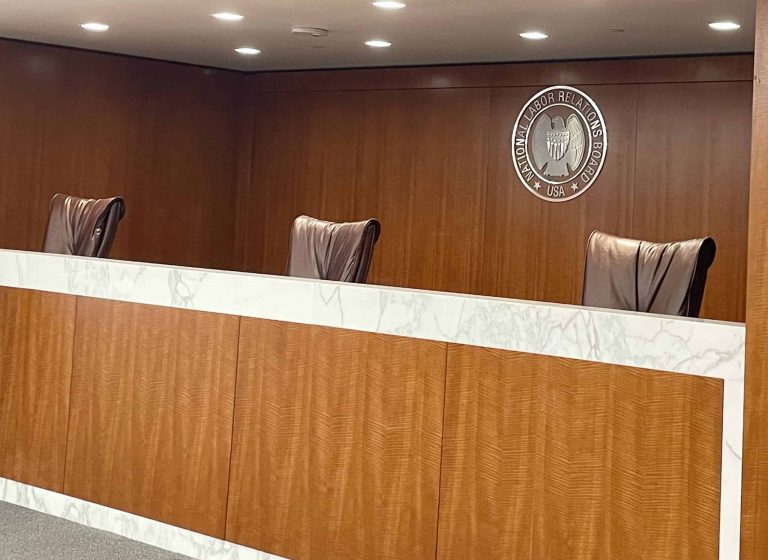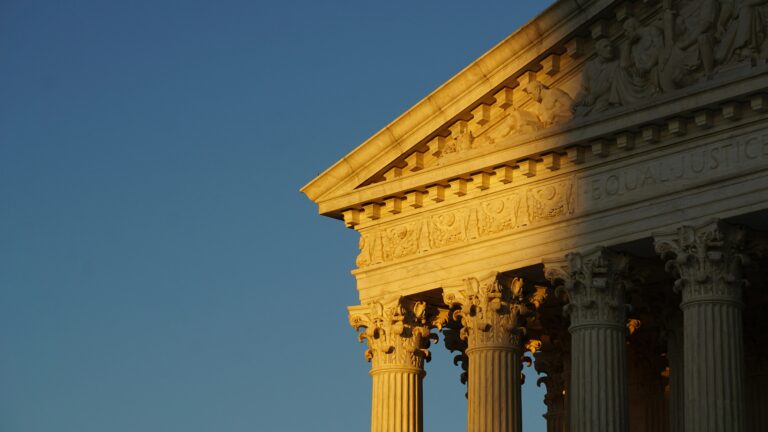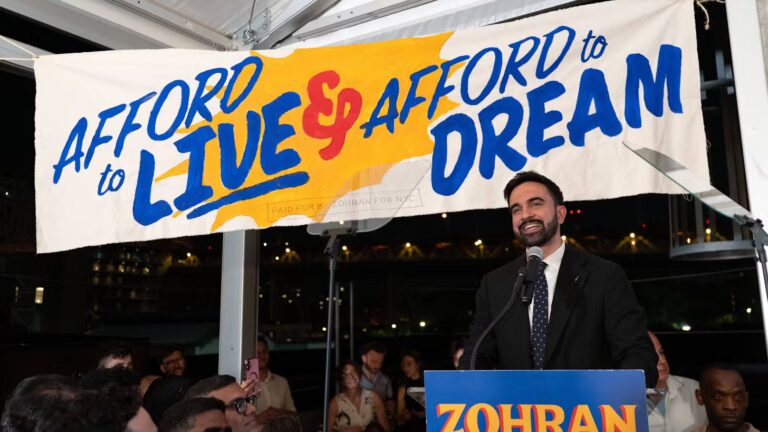
Benjamin Sachs is the Kestnbaum Professor of Labor and Industry at Harvard Law School and a leading expert in the field of labor law and labor relations. He is also faculty director of the Center for Labor and a Just Economy. Professor Sachs teaches courses in labor law, employment law, and law and social change, and his writing focuses on union organizing and unions in American politics. Prior to joining the Harvard faculty in 2008, Professor Sachs was the Joseph Goldstein Fellow at Yale Law School. From 2002-2006, he served as Assistant General Counsel of the Service Employees International Union (SEIU) in Washington, D.C. Professor Sachs graduated from Yale Law School in 1998, and served as a judicial law clerk to the Honorable Stephen Reinhardt of the United States Court of Appeals for the Ninth Circuit. His writing has appeared in the Harvard Law Review, the Yale Law Journal, the Columbia Law Review, the New York Times and elsewhere. Professor Sachs received the Yale Law School teaching award in 2007 and in 2013 received the Sacks-Freund Award for Teaching Excellence at Harvard Law School. He can be reached at [email protected].
In light of the Court’s grant of cert. in Janus v. AFSCME, I’m posting my new draft article on the subject. The article, Agency Fees and the First Amendment, 131 Harv. L. Rev. (forthcoming Feb. 2018), makes two related arguments, both of which aim to demonstrate why there is no first amendment problem with agency fees. One, the Court’s agency fees jurisprudence proceeds from the assumption that fees are employees’ money that employees’ pay to a union. The Court treats agency fees as employees’ money because fees pass through employee paychecks on the way from employers to unions. But this is simply an accounting formalism required by labor law. Because employees have no choice but to pay the fees, the fact that the fees pass through paychecks is irrelevant for purposes of First Amendment analysis. Instead, under the Court’s First Amendment cases, agency fees are – and must be treated as – payments made directly by employers to unions. And payments made by employers to unions raise no compelled speech or association problems for employees. Two, irrespective of the accounting regime, the article shows why agency fees ought to be treated as union property rather than as the property of individual employees. The article relies on the Court’s IOLTA and eminent domain cases, and on a strand of economic theory that traces back at least as far as John Stuart Mill, to make this point.
The article thus provides two sets of arguments with the same fundamental implication: agency fees are not properly understood as payments made by employees to unions, and there is accordingly no compelled speech or association problem with agency fees. The full draft is available here. The draft Introduction provides a summary of the argument and is pasted below:
In the last five years alone, the United States Supreme Court has decided three cases involving agency fees – the mandatory payments that certain employees are required to make to unions. The Court will hear a fourth case this Term.[1] All of these cases raise the question of whether agency fee agreements in the public sector are constitutional under the First Amendment. In the case argued last year, Friedrichs v. California Teachers Association,[2] the Court appeared poised to hold in the negative and to decide that agency fees amount to compelled speech and association. The death of Justice Scalia prevented the Court from reaching such a holding in Friedrichs, but the question has returned again in Janus v. AFSCME.[3]
To those outside the field of labor law, the issue of agency fees might seem picayune.[4] But it is not, and it is not for reasons that explain the Court’s interest in the issue. Agency fees are the sole means through which unions have been permitted to overcome what otherwise would be an existential collective action problem. In brief, unions have a legal obligation to provide benefits to all workers in a given workplace or bargaining unit.[5] Union-negotiated benefits therefore have the character of public goods: if a union negotiates a wage increase, or better benefits package, or enhanced safety and health protections, these improvements must be extended to all the workers covered by the collective agreement. If unions are required to rely for their financing on voluntary payments from these workers, then unions would face extensive free riding by all those workers who would rather receive benefits for free than pay for them.[6] A decision holding agency fees unconstitutional would thus jeopardize the future of public sector unions.
Much has been written about agency fees, and the issue is among the most extensively adjudicated in American labor law. But this Article will argue that we have misconceived the nature of what agency fees are. The jurisprudence and scholarship on agency fees proceeds from the assumption that such fees are workers’ money that workers pay to a union. As Justice Scalia put it in a recent opinion, an agency fee agreement gives the union authority to “acquire and spend other people’s money.”[7] This understanding of agency fees sets up the First Amendment question: because the money that becomes fees belongs to workers, its compelled transfer to the union may constitute compelled speech or association.[8] But this is the wrong way to understand agency fees, and for two sets of reasons.
First, the Court treats agency fees as employees’ money because those fees are paid, as a formal matter, out of employee paychecks. The money that becomes fees appears as wages on the income side of an employee’s paycheck and as a mandatory payment on the expense side of the paycheck. But this is an accounting formalism required by labor law. For purposes of First Amendment analysis, agency fees are – and should be treated as – a payment made by employers to unions.
As this Article will show, in order to eliminate the company unions that were prevalent in the 1930s, the National Labor Relations Act, and the state public sector labor laws that followed it, prohibits employers from paying any monies directly to unions. Instead, labor law establishes an accounting regime under which employers pay wages to workers, who then must pay fees to the union. Although the specific numbers are not important, an example from the contemporary labor market will help explain the operation of this accounting rule. The most recent estimates show, for example, that unionization results in a premium of about 17%.[9] Agency fees now average in the neighborhood of 2% of wages.[10] Labor law’s accounting rules require that employers pay all 17% of the premium to individual workers in the form of higher wages, and then allows employers to mandate that workers pay – on pain of discharge – 2% back to the union. Prohibited by labor law is a functionally equivalent regime in which workers receive a 15% wage increase and employers pay 2% directly to unions.
As a result of labor law’s accounting regime, the money that becomes agency fees does in fact pass through employee paychecks en route from employer to union. But, for purposes of First Amendment analysis, the fact that these monies pass through employee paychecks is irrelevant: the payment must be treated as one made by the employer to the union. The Court established this rule in a cognate area of First Amendment law, where it resolved the question of whether government payments made to individual families and then paid, by those families, to religious schools violate the Establishment Clause. The answer to this First Amendment question turns on whether the payments to the religious schools are treated as coming from the families or from the government. The Court has held that this answer depends on whether the families have a “genuine choice” about paying the money to a religious school or a secular school.[11] Where there is “true private choice” then the “circuit between government and religion [is] broken” and there is no First Amendment violation.[12] Where such choice is lacking, the fact that the monies pass through the hands of families becomes irrelevant and must be treated as “a government program of direct aid to religious schools.”[13]
In the agency fees context, employees of course have no “genuine choice” about whether or not they pay fees to a union – that is the essence of every constitutional challenge to agency fees. Because there is no employee choice on the matter, however, the fact that employer payments pass through employee paychecks does not ‘break the circuit’ between the employer and the union. For purposes of First Amendment analysis, therefore, the payments should be treated as if they flowed directly from the employer to the union.[14] And monies that flow from the employer to the union do not create compelled speech or association problems for employees.
Second, irrespective of the accounting regime, there are more foundational reasons for treating agency fees as union property rather than as the property of individual workers. Unionization increases the bargaining power of workers by allowing them to negotiate collectively rather than individually with employers. This increased bargaining power enables workers, as a collective, to transfer more wealth from the employer to themselves than the workers would have been able to secure as individuals.[15] Agency fees amount to a small fraction of this transfer – a small fraction of the union premium. The question is whether the union premium, and the fees that come out of it, ought to be treated as property of the union in the first instance or as property of individual workers.
Because it is the union that produces the premium, and because individual workers would never earn the premium as individuals, it is not at all clear why we ought to treat the premium as the property of individual workers. To the contrary, it makes better sense to treat the excess wealth transferred by unionization – and the fees that come out of this transfer – as the product of collectivization that belongs to the collective which produced it. Agency fees, in other words, should be treated as the property of the union that secured them.
Although as yet unidentified in the literature, there is both doctrinal and theoretical support for this intuition. On the doctrinal side, two areas of Takings jurisprudence are illuminating. One concerns the law of IOLTA programs, which use interest generated by lawyers’ trust accounts to fund legal services programs. As the Article will discuss, IOLTA programs are funded by interest that is generated solely through the collectivizing effect of the program itself: but for the aggregating effect of the IOLTA program, individual clients would earn no interest. In light of this fact, courts have held either that individual clients have no property in the interest that the aggregated principal generates – they do not own it – or, alternatively, that the value of their property in the interest is zero. A similar rule emerges from a line of eminent domain cases: where value is created solely through the “union” of individual lots that results from the government’s action in taking the land, the individual lot owners have no property interest in the value thus created through the union of the lots.[16] In both these areas of law, then, where value is created through collectivization, it is the collective not the individual that owns the value thus created. And, as the Article will also show, treating value created collectively as the property of the collective has a home in a strand of economic theory that traces back at least to the work of John Stuart Mill.
The Article thus provides two sets of reasons for concluding the Court is wrong that agency fee agreements give the union authority to “acquire and spend other people’s money.”[17] And both arguments have the same fundamental implication for the jurisprudence of agency fees: if we understand that agency fees ought not be treated as payments from employees to unions, the First Amendment problem with agency fees – the idea that such fees amount compelled speech or association – disappears.
After providing a quick overview of the Supreme Court’s agency fees cases, this Article endeavors to do four things. First, to show that although the money that becomes agency fees passes through employee paychecks en route from employers to unions, for purposes of First Amendment analysis this does not convert the employer’s money into employee property before the union receives it. Second, to show that there are strong justifications in precedent outside the labor context for treating the union premium, and the fees that come out of it, as the property of the union, and not as the property of individual workers. Third, to demonstrate the implications of no longer treating agency fees as payments from employees to unions: namely, that the First Amendment problem with agency fees evaporates. And, fourth, to note that states can also address this issue by changing public sector labor law’s accounting regime to formally permit direct payments from employers to unions, and to discuss the implications beyond the First Amendment of such a change in policy.[18]
[1] See Janus v. AFSCME (cert. granted Sept. 28, 2017)
[2] 578 U.S. __ (2016).
[3] See, e.g., Moshe Z. Marvit, Labor Opponents Already Have the Next ‘Friedrichs’ SCOTUS Case Ready to Go Under Trump, In These Times, Jan. 4, 2017.
[4] For expositional simplicity, this Article will use “agency fees” or simply “fees” interchangeably to refer to payments to unions that are required by a collective bargaining agreement. “Dues” will be used to refer to payments that go beyond what is required by a collective bargaining agreement; i.e. payments that include both the mandatory component and a non-mandatory component. See, e.g., Catherine Fisk and Benjamin I. Sachs, Restoring Equity in Right to Work Law, 4 U.C. Irvine L. Rev. 857 (2014). The Article’s analysis, like the Court’s jurisprudence, is concerned only with agency fees.
[5] For a summary, see, e.g., Catherine Fisk and Benjamin I. Sachs, Restoring Equity in Right to Work Law, 4 U.C. Irvine L. Rev. 857 (2014).
[6] See, e.g., Harris v. Quinn, 134 S.Ct. 2618, 2657 (Kagan, J. dissenting).
[7] Davenport v. Washington Educ. Assoc., 551 U.S. at x (2007).
[8] Of course, even on the traditional understanding – of fees as employee property paid by workers to unions – there are strong arguments that mandatory agency fees do not amount to unconstitutional compelled speech. See, e.g., Erwin Chemerinsky and Catherine Fisk, Political Speech and Association Rights After Knox v. SEIU, Local 1000, 98 Cornell L. Rev. 1023 (2013). That set of arguments is beyond the scope here.
[9] By collectivizing their bargaining power, unionization allows workers to increase the compensation they receive from employers. This union “premium” includes higher wages, see, e.g., Frank Manzo, Robert Bruno, and Virginia Parks, The State of the Unions 2016: A Profile of Unionization in Chicago, in Illinois, and in America (2016), but it also includes things like expanded paid leave, better health and retirement benefits, and heightened protections against discharge. See, e.g, John W. Budd, The Effect of Unions on Employee Benefits and Non-Wage Compensation: Monopoly Power, Collective Voice, and Facilitation, in James T. Bennett & Bruce E. Kaufman, eds., What Do Unions Do? A Twenty-Year Perspective (2008). Because the 17% figure captures only wage gains, and does not include benefits, it significantly underestimates the actual value of the union premium. See, e.g., Budd, supra n.X at 177. It is also true that, in certain contexts, the union premium amounts to a reduction in wage losses rather than an absolute wage increase: the 17% figure reflects an average across the entire labor market.
[10] Full union dues amount to approximately 3% of wages. See, e.g., Ben Casselman, Closer Look at Union vs. Nonunion Workers’ Wages, WSJ, Dec. 17, 2012, available at http://blogs.wsj.com/economics/2012/12/17/closer-look-at-union-vs-nonunion-workers-wages/. Agency fees, which include only the amount that unions spend on collective bargaining and contract administration, vary widely across unions and across collective bargaining agreements. The specific number is irrelevant to the analysis in this Article. For purposes of illustration only, I estimate agency fees as equaling 2/3 of full union dues, or 2% of wages. The agency fee at issue in the Friedrichs litigation was approximately 2/3 of full dues, and thus the figure seems appropriate for illustration purposes here. See, e.g., Alana Semuels, Why Are Unions So Worried About an Upcoming Supreme Court Case?, The Atlantic, Jan. 8 (2016), available at https://www.theatlantic.com/business/archive/2016/01/friedrichs-labor/423129/ (“In California, members pay annual dues that average about $1,000 a year, while non-members pay about $600 to $650 for the agency fee alone.”); Friedrichs v. California Teachers Ass’n, No. SACV 13-676-JLS CWX, 2013 WL 9825479, at *1 (C.D. Cal. Dec. 5, 2013) (Compl., Doc. 1 ¶ 63)(“ The total amount of annual dues generally exceeds $1,000 per teacher, while the amount of the refund received by nonmembers who successfully opt out of the non-chargeable portion of their agency fees is generally around $350 to $400.) For other agency fee calculations, see, e.g., http://www.pennlive.com/politics/index.ssf/2016/01/should_non-union_members_have.html (showing that the agency fee paid by Pennsylvania teachers is 77% of full dues); https://www.mape.org/my-mape/our-union/member-vs-fee-payer-whats-difference (showing that the agency fee paid by workers in Minnesota’s largest public employee union was 85% of full dues); https://www.mft59.org/index.php/contracts-and-salary/teachers/2015-2017-contract-and-documents/2016-teachers-dues-rates-for-taxes (showing that the agency fee paid by Minnesota teachers ranges from 50-70% of fall dues).
[11] Zelman v. Simmons-Harris, 536 U.S 639, 662 (2002).
[12] Id. at 652.
[13] Mitchell v. Helms. 530 U.S. 793, 842 (2000) (O’Connor J., concurring).
[14] As also discussed infra at n.x, although the First Amendment would ignore labor law’s accounting formalism and treat agency fee payments as flowing directly from employer to union, the NLRA – and analogous state statutes – is entitled to rely on this accounting system and to distinguish between payments made directly by employers to unions and payments that flow from employers, thought employee paychecks, and on to unions. Compare 29 U.S.C. § 158(a)(2) and §186 with 29 U.S.C. §158(a)(3) and 29 U.S.C. §186(c)(4). Thus, that fact that the First Amendment would view agency fees as a payment made by employers to unions does not invalidate a statutory regime that prohibits one kind of accounting system and enables the other.
[15] See generally, Richard Freeman and James Medoff, What Do Unions Do? 6-7 (1984).
[16] Indeed, “union” is the term the Court uses in these cases. See infra TAX xx-xx.
[17] Davenport, 551 U.S. at x.
[18] Two recent articles argue that states could amend their public sector bargaining laws and permit direct employer payments to unions as substitute for the current system, and both articles discuss what they see as the First Amendment implications of that point. See Daniel Hemel & David Louk, Is Abood Irrelevant?, 82 U. Chi. L. Rev. Dialogue 227 (2016); Aaron Tang, Public Sector Unions, The First Amendment, and the Costs of Collective Bargaining, 91 N.Y.U. L. Rev. 144 (2016). Neither piece argues, as this Article does, that the current system is already – for constitutional purposes – a system of direct payments from employers to unions. Nor do either of the earlier articles contend that, for the reasons developed here, agency fees ought to be treated as the property of the union that generates them.










Daily News & Commentary
Start your day with our roundup of the latest labor developments. See all
December 12
OH vetoes bill weakening child labor protections; UT repeals public-sector bargaining ban; SCOTUS takes up case on post-arbitration award jurisdiction
December 11
House forces a vote on the “Protect America’s Workforce Act;” arguments on Trump’s executive order nullifying collective bargaining rights; and Penn State file a petition to form a union.
December 8
Private payrolls fall; NYC Council overrides mayoral veto on pay data; workers sue Starbucks.
December 7
Philadelphia transit workers indicate that a strike is imminent; a federal judge temporarily blocks State Department layoffs; and Virginia lawmakers consider legislation to repeal the state’s “right to work” law.
December 5
Netflix set to acquire Warner Bros., Gen Z men are the most pro-union generation in history, and lawmakers introduce the “No Robot Bosses Act.”
December 4
Unionized journalists win arbitration concerning AI, Starbucks challenges two NLRB rulings in the Fifth Circuit, and Philadelphia transit workers resume contract negotiations.